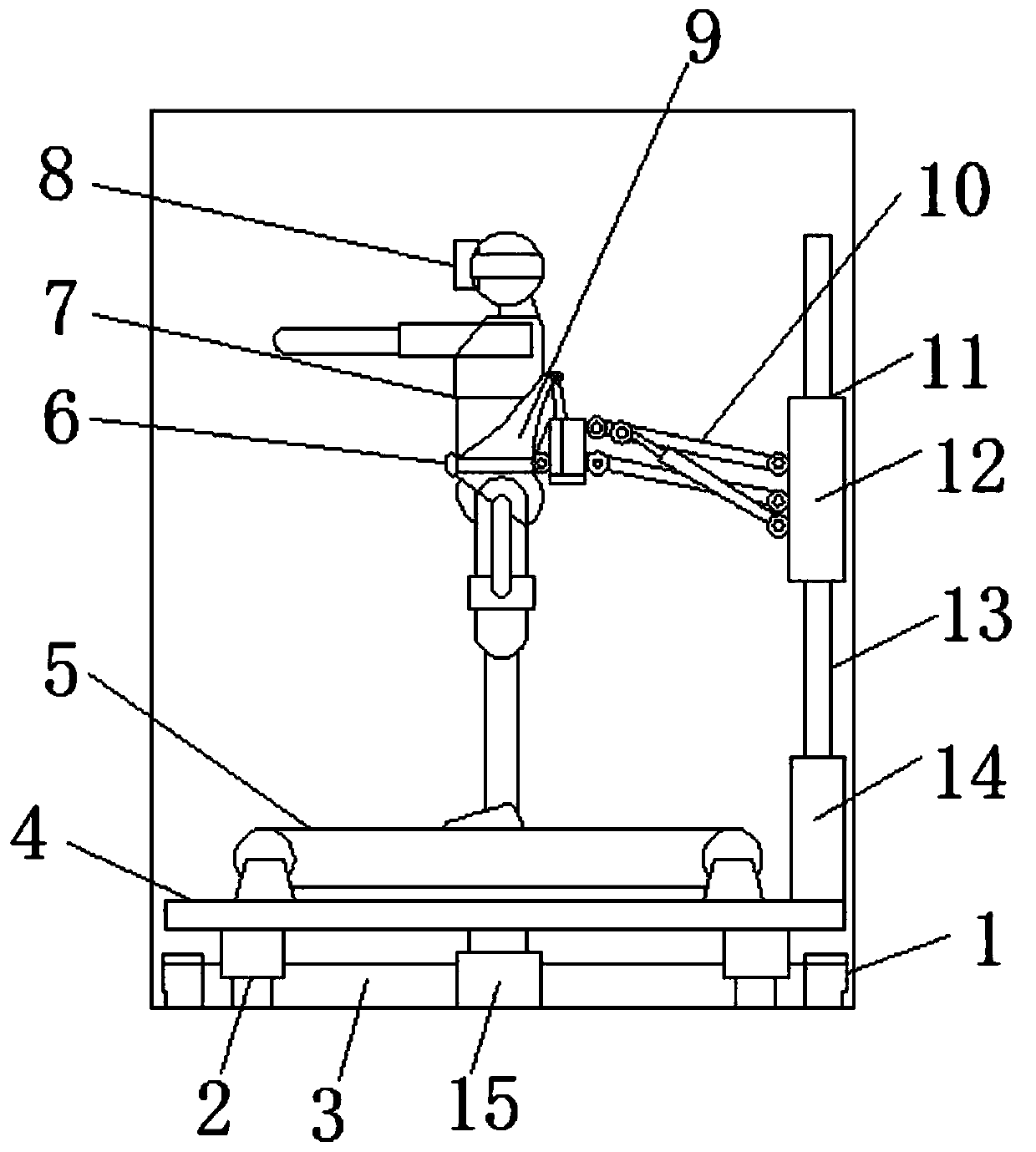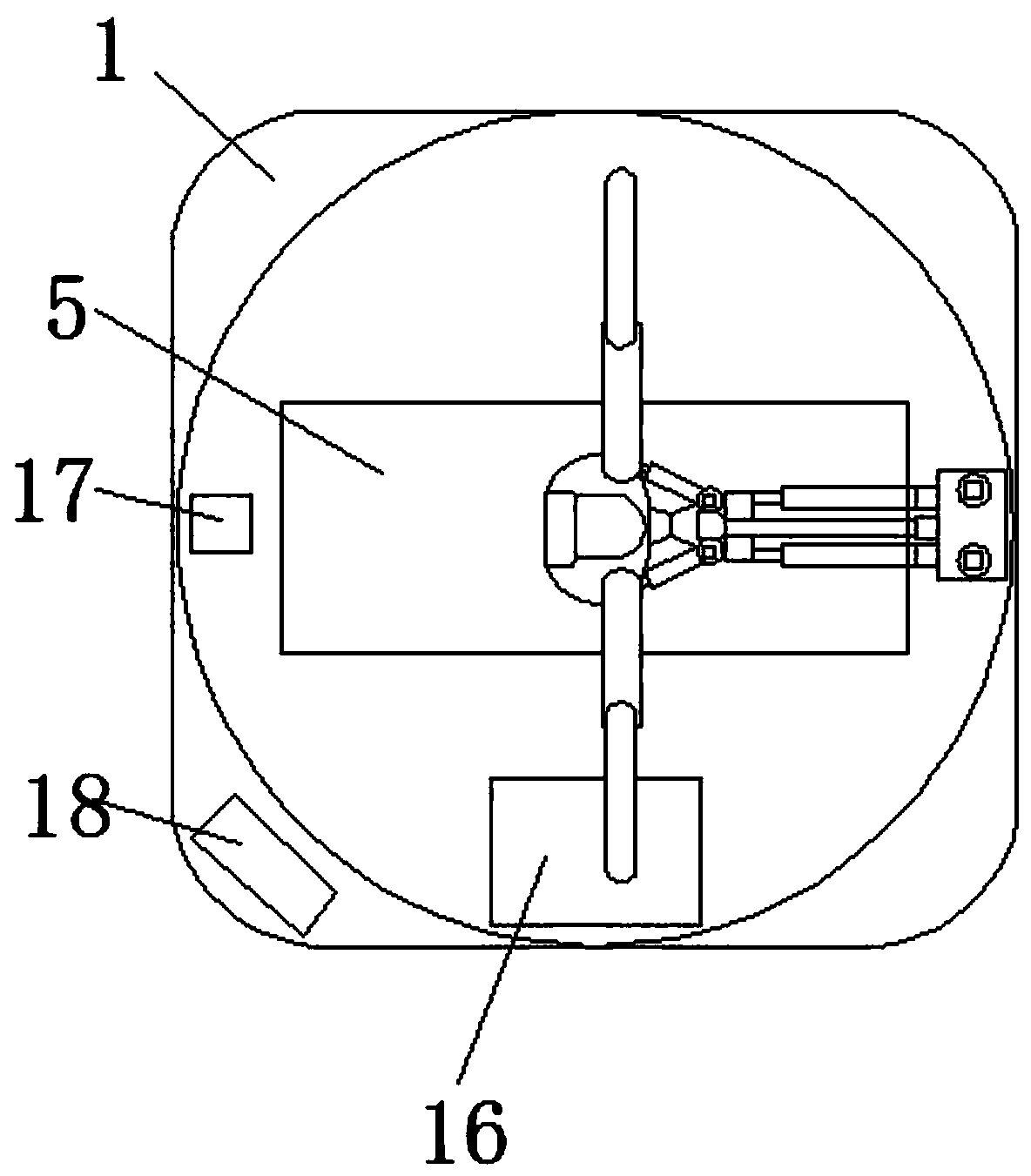[0005] 1) Human movement is greatly restricted
This reflected in the
virtual space means that the user cannot operate the
virtual space, characters and objects with the natural movements of the
human body (for example, the most typical use of "continuous movement and free walking in the virtual space cannot be achieved by walking in reality with the
human body walking."
Handle operation", "momentary movement" and other unnatural ways to compensate), so that the experience of VR (
virtual reality) is fundamentally reduced;
[0006] 2) Security is difficult to guarantee
Even if there is no real body displacement, only considering the in-situ movement, it is difficult to guarantee safety by using VR glasses alone
The fundamental reason is that the human biped upright is a
natural state of dynamic imbalance, which requires constant dynamic fine-tuning of the
body posture to maintain balance. For
normal people, the
visual system is the
core system to achieve this balance mechanism (blind people need a lot of
Muscle exercises and the use of crutches to assist in obtaining "touching"
perception to avoid falling when walking and turning), it is difficult for the
visual system to participate in balance fine-tuning after wearing VR glasses, so it is easy to lose balance when the body moves and turns (even in situ) collision and fall accidents;
This leads to a fundamental weakening of the sense of substitution in the VR world, and makes it difficult to realize and express games and applications that use the "human body" (including humanoid machines) as the mapping object;
[0011] 2) The types of games and applications are limited
[0016] 2) Actions relying on the soles of the feet are severely limited: Since the surface in contact with the soles of the feet is always in a sliding state, there is a lack of friction between the soles of the feet and the ground, and the entire surface is a
concave surface, which severely limits the movements that rely on the soles of the feet to exert force
[0017] 3) Lack of natural sense of balance: Under
normal conditions, vision is the most important feedback channel for the human body’s balance information. After wearing VR glasses, the visual connection between the human body and the
physical space is
cut off, and the
tactile sense between the soles of the feet and the ground becomes the only one. The most important
information feedback to control the balance
However, the ground that is always in a sliding state, the concave shape and the sole with hard rollers cannot give the human body the correct information of contact with the ground-there are three main points of contact with the ground on the sole of the human foot, the
heel, the
heel of the big
toe and the little
toe. The mechanical model of a triangular support formed by the
heel and the ground
The sole equipped with hard rollers destroys the mechanical model of this triangular support, resulting in a lack of natural balance.
Relying on tools such as
waist rings and slings to balance external forces not only cannot replace the sense of balance obtained by the human body itself through the contact between the soles of the feet and the ground, but also further deteriorates the tendency of the human body to regain a sense of balance through exercises after using VR glasses (similar to closed eye-single-foot
balance training)
[0018] 4) The range of body movements is greatly limited: when exercising on a sliding reset universal treadmill, first of all, the lower limbs cannot make greater range and strength due to the lack of friction on the soles of the feet, uneven ground and raised edges around the concave slideway. Actions—including but not limited to running,
jumping, squatting, sitting,
crawling, etc.; and then the upper limbs cannot make large and powerful movements due to the difficulty of exerting force on the lower limbs, the obstruction of the
waist ring and the sling, etc. action
[0020] 1) Unresponsiveness: due to the need for
signal acquisition and
program calculation for complex (more than two steps) gaits, then the movement speed of the running belt in the corresponding direction and position can be given, which inherently has a large
delay[0021] 2) The mechanism is complex: it is necessary to use a large number of reset devices (such as rollers or running belts) with small size and active driving function, which makes it difficult to implement in terms of reliability, practicability and economy
[0022] 3) Limited movement: At present, only the human-computer
interaction function of walking and walking can be provided experimentally, and high-frequency and large-scale movements such as running and
jumping cannot be performed.
[0023] 4) Poor balance: There is always a dynamic synchronization problem between the mechanical movement of the active reset universal treadmill and the human movement, and any synchronization difference may cause the user to lose his
body balance[0025] 1) Unable to achieve infinite continuous walking: From the core principle of large-space VR technology and solutions, the
virtual world activity space that can be provided is basically equivalent to the physical space of the user in the real world
If you want to obtain an approximate infinite walking function, you need to continuously use settings similar to space jumps on the edge of the real physical space, and you cannot achieve infinite walking in a continuous space like the real world, which greatly limits large-space VR technology. Application scenarios and solutions
[0026] 2) Actions are limited: the actions that VR users can make in the
virtual world in the large space are basically the same as the actions that can be made in the real world, that is, ground activities under safety restrictions, which limits all aspects of the world. infinite possibility
[0027] 3) Limited space: In order to obtain a large enough
virtual world space, large-space VR technology and solutions always require as much real space as possible, which leads to many practical problems, which are difficult to solve as a popular VR human-computer interaction Program
However, the number of users accommodated in the same real space is limited, which makes this VR human-computer
interaction technology and solution
consumer-grade products or services suffer from low efficiency.
[0028] 4) Potential safety hazards: Since multiple users carry out activities and operations in the same real space, no matter what safety measures are taken technically, conflicts and collisions between human bodies cannot be avoided, especially life-threatening of human stampede accidents
The main reasons for the limitation of limb movement are: safety factors (for example, the independent use of VR glasses and the prominent safety problems of large-space VR), blocking factors (for example, the balance
waist ring and column of the omni universal treadmill block the
free movement of the upper limbs), mechanical Factors (such as the movement mode of the sliding reset universal treadmill, uneven ground, lack of friction, hard rollers and other mechanical factors that deprive the soles of the feet of the natural sense of balance make it difficult for the lower limbs and the core area of the waist to exert force, thus affecting the movement of the upper limbs and even the
whole body. ), principle defects (for example, the core principle of the current active reset universal treadmill is to first collect the human walking movement information for a period of time or distance, and then calculate and control the mechanism of the corresponding position to implement reset, or because of the
time lag can only allow Doing actions with a small frequency range such as walking, or requiring a large space size leads to poor economical efficiency and environmental adaptability)
 Login to View More
Login to View More  Login to View More
Login to View More 


